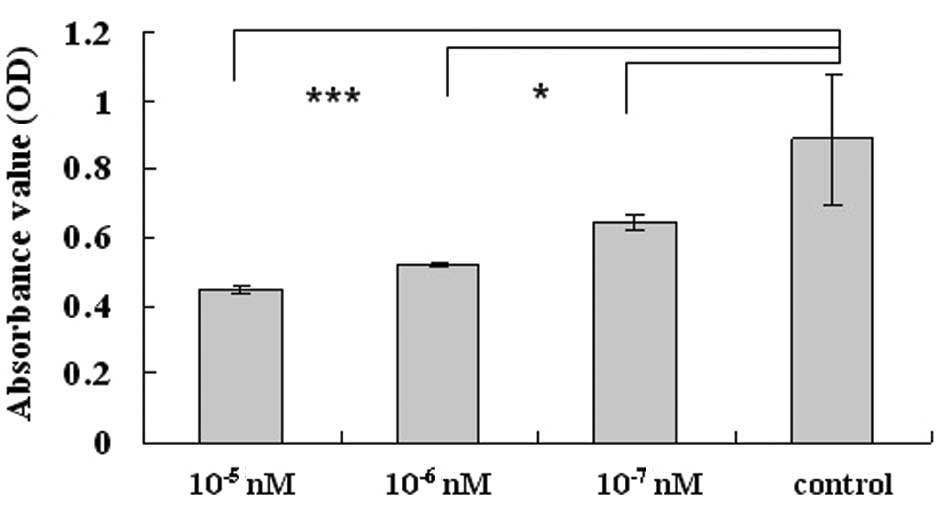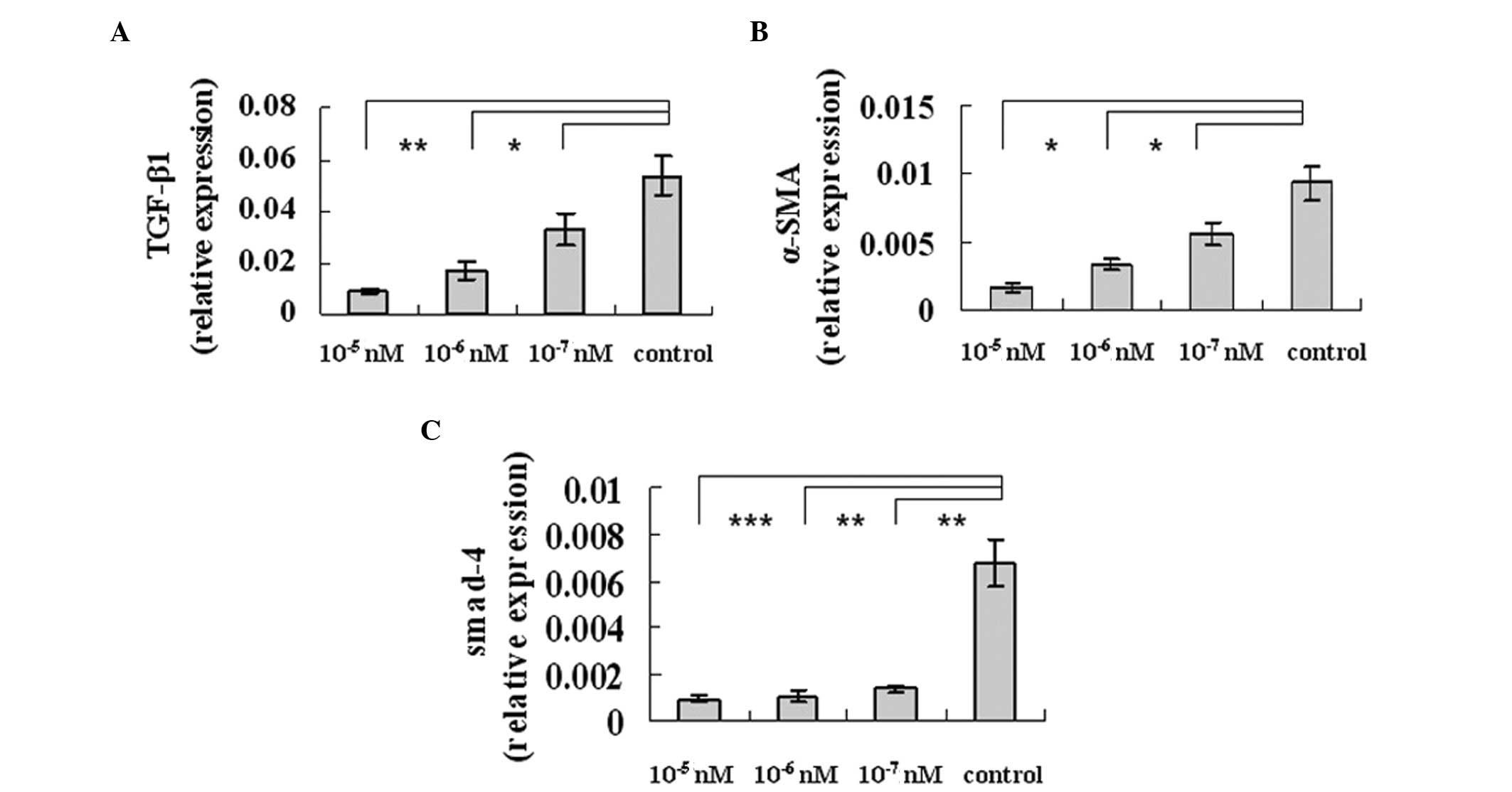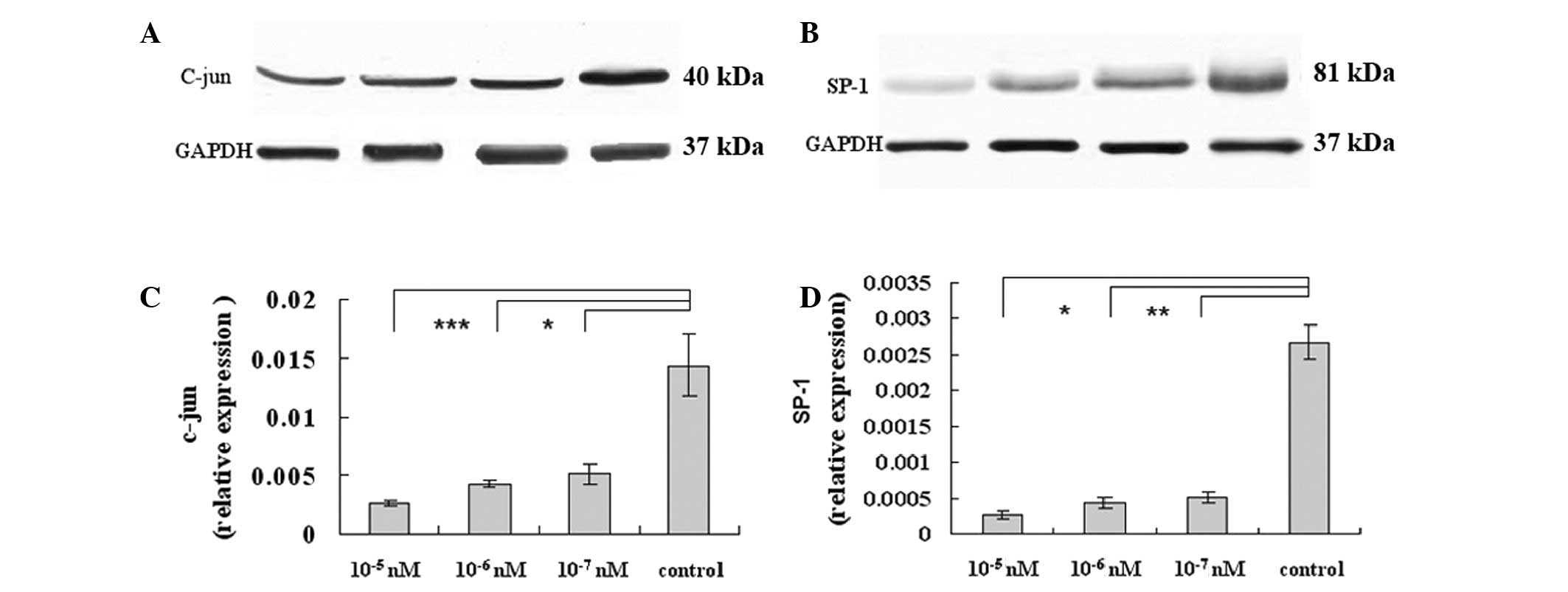|
1
|
Arroyo V, Terra C and Ginès P: Advances in
the pathogenesis and treatment of type-1 and type-2 hepatorenal
syndrome. J Hepatol. 46:935–946. 2007. View Article : Google Scholar : PubMed/NCBI
|
|
2
|
Friedman SL: Liver fibrosis - from bench
to bedside. J Hepatol. 38(Suppl 1): S38–S53. 2003. View Article : Google Scholar
|
|
3
|
Bartlett ST, Kuo PC, Johnson LB, Lim JW
and Schweitzer EJ: Pancreas transplantation at the University of
Maryland. Clin Transpl. 271–280. 1996.
|
|
4
|
Sutherland DE, Gruessner R, Gillingham K,
et al: A single institution’s experience with solitary pancreas
transplantation: a multivariate analysis of factors leading to
improved outcome. Clin Transpl. 141–152. 1991.
|
|
5
|
Watts SW, Yang P, Banes AK and Baez M:
Activation of Erk mitogen-activated protein kinase proteins by
vascular serotonin receptors. J Cardiovasc Pharmacol. 38:539–551.
2001. View Article : Google Scholar : PubMed/NCBI
|
|
6
|
Li T, Weng SG, Leng XS, et al: Effects of
5-hydroxytamine and its antagonists on hepatic stellate cells.
Hepatobiliary Pancreat Dis Int. 5:96–100. 2006.PubMed/NCBI
|
|
7
|
Friedman SL: Molecular regulation of
hepatic fibrosis, an integrated cellular response to tissue injury.
J Biol Chem. 275:2247–2250. 2000. View Article : Google Scholar : PubMed/NCBI
|
|
8
|
Xia D, Zhao RQ, Wei XH, Xu QF and Chen J:
Developmental patterns of GHr and SS mRNA expression in porcine
gastric tissue. World J Gastroenterol. 9:1058–1062. 2003.PubMed/NCBI
|
|
9
|
Vindeløv SD, Hartoft-Nielsen ML, Rasmussen
AK, et al: Interleukin-8 production from human somatotroph adenoma
cells is stimulated by interleukin-1β and inhibited by growth
hormone releasing hormone and somatostatin. Growth Horm IGF Res.
21:134–139. 2011.PubMed/NCBI
|
|
10
|
Yao YL, Xu B, Zhang WD and Song YG:
Gastrin, somatostatin, and experimental disturbance of the
gastrointestinal tract in rats. World J Gastroenterol. 7:399–402.
2001.PubMed/NCBI
|
|
11
|
Sun FP, Song YG, Cheng W, Zhao T and Yao
YL: Gastrin, somatostatin, G and D cells of gastric ulcer in rats.
World J Gastroenterol. 8:375–378. 2002.PubMed/NCBI
|
|
12
|
Li YY: Mechanisms for regulation of
gastrin and somatostatin release from isolated rat stomach during
gastric distention. World J Gastroenterol. 9:129–133.
2003.PubMed/NCBI
|
|
13
|
Reynaert H, Thompson MG, Thomas T and
Geerts A: Hepatic stellate cells: role in microcirculation and
pathophysiology of portal hypertension. Gut. 50:571–581. 2002.
View Article : Google Scholar : PubMed/NCBI
|
|
14
|
Li T, Shi Z and Rockey DC:
Preproendothelin-1 expression is negatively regulated by IFNγ
during hepatic stellate cell activation. Am J Physiol Gastrointest
Liver Physiol. 302:G948–G957. 2012.
|
|
15
|
Ma J, Zhang L, Han W, et al: Activation of
JNK/c-Jun is required for the proliferation, survival, and
angiogenesis induced by EET in pulmonary artery endothelial cells.
J Lipid Res. 53:1093–1105. 2012. View Article : Google Scholar : PubMed/NCBI
|
|
16
|
Fuest M, Willim K, MacNelly S, et al: The
transcription factor c-Jun protects against sustained hepatic
endoplasmic reticulum stress thereby promoting hepatocyte survival.
Hepatology. 55:408–418. 2012. View Article : Google Scholar
|
|
17
|
Reich N, Tomcik M, Zerr P, et al: Jun
N-terminal kinase as a potential molecular target for prevention
and treatment of dermal fibrosis. Ann Rheum Dis. 71:737–745. 2012.
View Article : Google Scholar : PubMed/NCBI
|
|
18
|
Zhang Y and Yao X: Role of c-Jun
N-terminal kinase and p38/activation protein-1 in
interleukin-1β-mediated type I collagen synthesis in rat hepatic
stellate cells. APMIS. 120:101–107. 2012.PubMed/NCBI
|
|
19
|
Avouac J, Palumbo K, Tomcik M, et al:
Inhibition of activator protein 1 signaling abrogates transforming
growth factor β-mediated activation of fibroblasts and prevents
experimental fibrosis. Arthritis Rheum. 64:1642–1652. 2012.
|
|
20
|
Ye Y and Dan Z: All-trans retinoic acid
diminishes collagen production in a hepatic stellate cell line via
suppression of active protein-1 and c-Jun N-terminal kinase signal.
J Huazhong Univ Sci Technolog Med Sci. 30:726–733. 2010. View Article : Google Scholar : PubMed/NCBI
|
|
21
|
Ling S, Zhou L, Li H, et al: Effects of
17beta-estradiol on growth and apoptosis in human vascular
endothelial cells: influence of mechanical strain and tumor
necrosis factor-alpha. Steroids. 71:799–808. 2006. View Article : Google Scholar
|
|
22
|
Evans PC, Taylor ER and Kilshaw PJ:
Signaling through CD31 protects endothelial cells from apoptosis.
Transplantation. 71:457–460. 2001. View Article : Google Scholar : PubMed/NCBI
|
|
23
|
Kang Q and Chen A: Curcumin inhibits
srebp-2 expression in activated hepatic stellate cells in vitro by
reducing the activity of specificity protein-1. Endocrinology.
150:5384–5394. 2009. View Article : Google Scholar : PubMed/NCBI
|
|
24
|
Asano Y, Ihn H, Yamane K, Kubo M and
Tamaki K: Increased expression levels of integrin alphavbeta5 on
scleroderma fibroblasts. Am J Pathol. 164:1275–1292. 2004.
View Article : Google Scholar : PubMed/NCBI
|
|
25
|
Walter T, Hommell-Fontaine J, Gouysse G,
et al: Effects of somatostatin and octreotide on the interactions
between neoplastic gastroenteropancreatic endocrine cells and
endothelial cells: a comparison between in vitro and in vivo
properties. Neuroendocrinology. 94:200–208. 2011. View Article : Google Scholar
|
|
26
|
Paternostro C, David E, Novo E and Parola
M: Hypoxia, angiogenesis and liver fibrogenesis in the progression
of chronic liver diseases. World J Gastroenterol. 16:281–288. 2010.
View Article : Google Scholar : PubMed/NCBI
|
|
27
|
Rosmorduc O: Antiangiogenic therapies in
portal hypertension: a breakthrough in hepatology. Gastroenterol
Clin Biol. 34:446–449. 2010. View Article : Google Scholar : PubMed/NCBI
|














